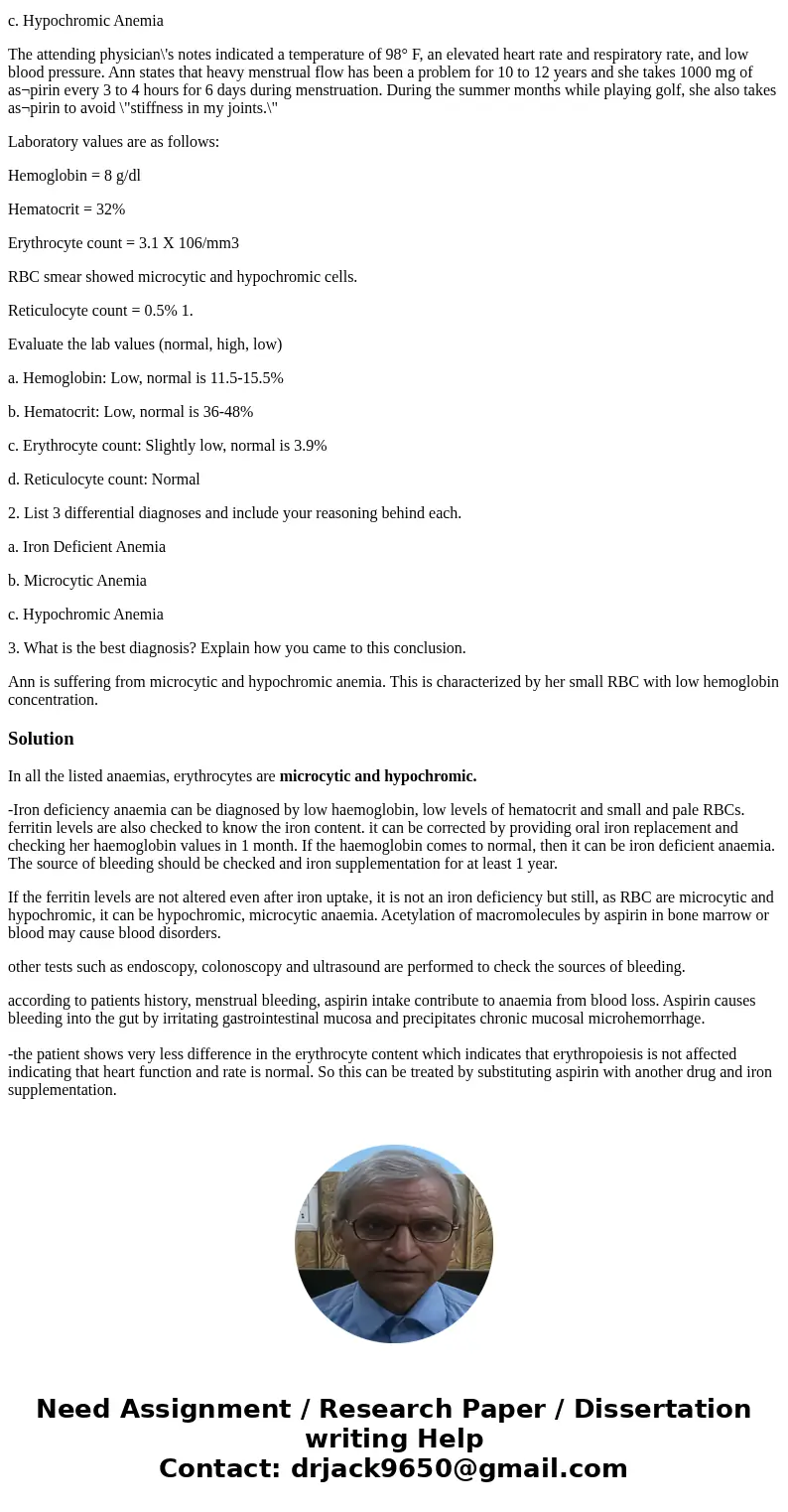I need explaining why the following causes may have caused t
I need explaining why the following causes may have caused the patient\'s symptoms. Case study with lab values are posted below.
a. Iron Deficient Anemia
b. Microcytic Anemia
c. Hypochromic Anemia
The attending physician\'s notes indicated a temperature of 98° F, an elevated heart rate and respiratory rate, and low blood pressure. Ann states that heavy menstrual flow has been a problem for 10 to 12 years and she takes 1000 mg of as¬pirin every 3 to 4 hours for 6 days during menstruation. During the summer months while playing golf, she also takes as¬pirin to avoid \"stiffness in my joints.\"
Laboratory values are as follows:
Hemoglobin = 8 g/dl
Hematocrit = 32%
Erythrocyte count = 3.1 X 106/mm3
RBC smear showed microcytic and hypochromic cells.
Reticulocyte count = 0.5% 1.
Evaluate the lab values (normal, high, low)
a. Hemoglobin: Low, normal is 11.5-15.5%
b. Hematocrit: Low, normal is 36-48%
c. Erythrocyte count: Slightly low, normal is 3.9%
d. Reticulocyte count: Normal
2. List 3 differential diagnoses and include your reasoning behind each.
a. Iron Deficient Anemia
b. Microcytic Anemia
c. Hypochromic Anemia
3. What is the best diagnosis? Explain how you came to this conclusion.
Ann is suffering from microcytic and hypochromic anemia. This is characterized by her small RBC with low hemoglobin concentration.
Solution
In all the listed anaemias, erythrocytes are microcytic and hypochromic.
-Iron deficiency anaemia can be diagnosed by low haemoglobin, low levels of hematocrit and small and pale RBCs. ferritin levels are also checked to know the iron content. it can be corrected by providing oral iron replacement and checking her haemoglobin values in 1 month. If the haemoglobin comes to normal, then it can be iron deficient anaemia. The source of bleeding should be checked and iron supplementation for at least 1 year.
If the ferritin levels are not altered even after iron uptake, it is not an iron deficiency but still, as RBC are microcytic and hypochromic, it can be hypochromic, microcytic anaemia. Acetylation of macromolecules by aspirin in bone marrow or blood may cause blood disorders.
other tests such as endoscopy, colonoscopy and ultrasound are performed to check the sources of bleeding.
according to patients history, menstrual bleeding, aspirin intake contribute to anaemia from blood loss. Aspirin causes bleeding into the gut by irritating gastrointestinal mucosa and precipitates chronic mucosal microhemorrhage.
-the patient shows very less difference in the erythrocyte content which indicates that erythropoiesis is not affected indicating that heart function and rate is normal. So this can be treated by substituting aspirin with another drug and iron supplementation.


 Homework Sourse
Homework Sourse